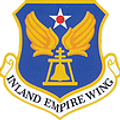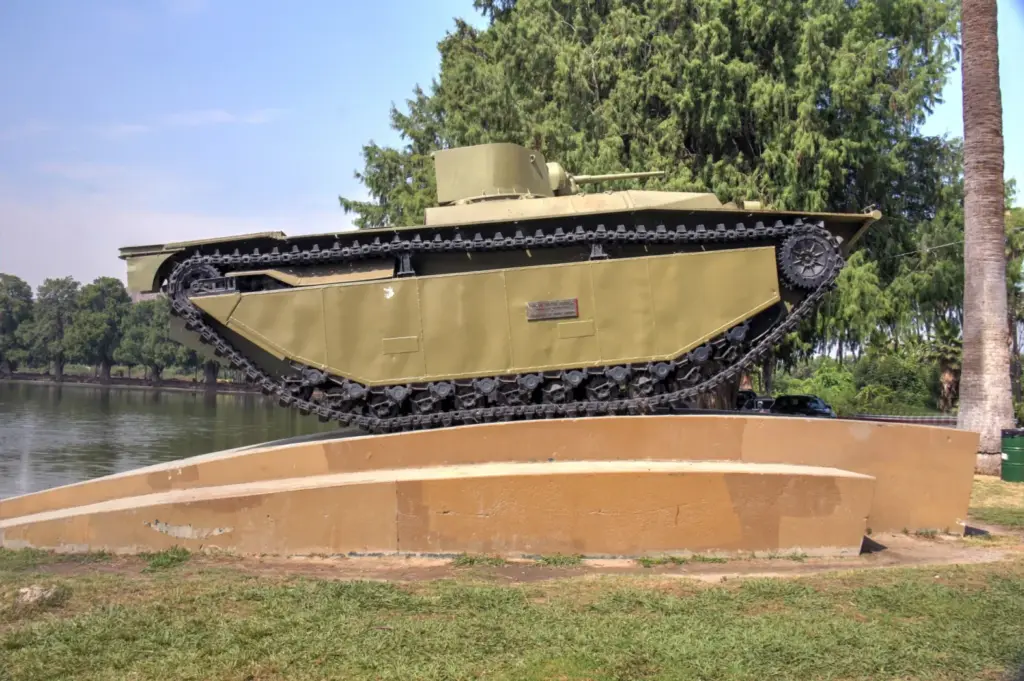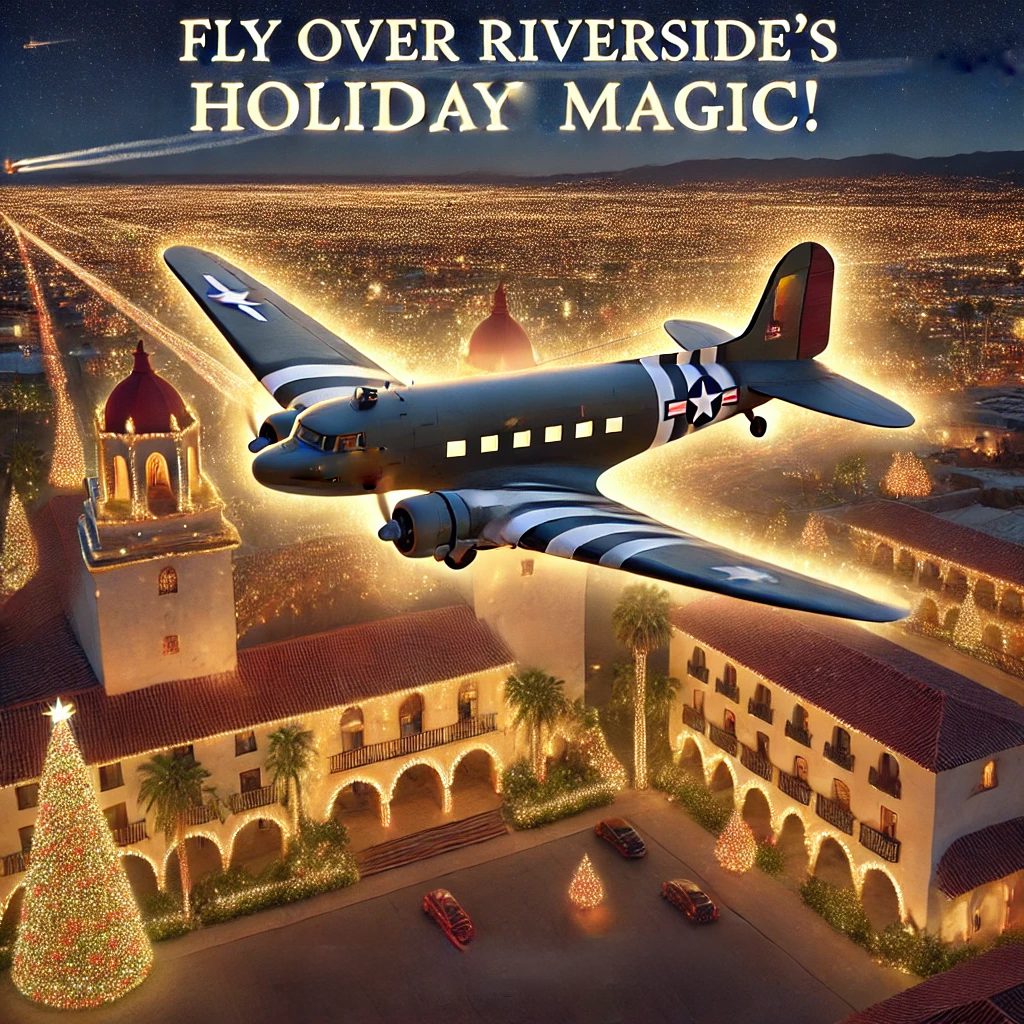In Fairmount Park, across from the American Le-
gion Hall is an impressive monument to the city’s
participation in wartime production during World
War II. The concrete ramp coming out of Lake
Evans supports one of many Water Buffalo am-
phibious vehicles produced in Riverside for
nearly four years.
The Water Buffalo, or LVT (landing vehicle,
tracked), started as a response to the need for a
vehicle that could traverse the Florida Everglades
after hurricanes. Soon though, the U.S. Navy and
Marines became interested in it, and as war broke
out, ordered thousands for use in the Pacific cam-
paign.
The main contract for production went to the Food
Machinery Corp. FMC had a large plant in River-
side that had been making fruit packing equipment.
By spring 1942, though, the plant was being con-
verted for war production.
Initially, about 20 vehicles were made each month.
By war’s end, about 10 vehicles a day were leaving
the plant. Many of them were tested on Riverside’s
roads, and lots were taken through their paces in
Lake Evans in Fairmount Park.
On Nov. 2, 1949, Riverside’s Water Buffalo was
driven across Lake Evans and up onto the con-
crete platform made for it. For 75 years, the Wa-
ter Buffalo has been a part of Lake Evans and
Fairmount Park.



